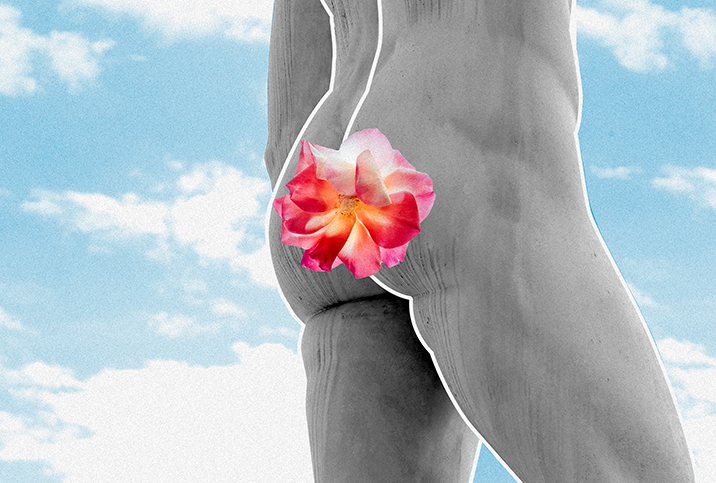Between the Pages: 'I ♥ Orgasms: A Guide to More' Reaches a New Climax

In their fully revised and updated new book, "I ♥ Orgasms: A Guide to More," sex educators Dorian Solot and Marshall Miller sought to help readers find pleasure in the bedroom. Solot and Miller teamed up with Maybe Burke, of the Transgender Training Institute, to create what they believe is one of the most inclusive books on orgasms to date.
The 348-page release is packed with helpful advice for both novices and aficionados, such as how to have an orgasm during penetration, how to find the G-spot and how to squirt.
If you'd like to invest in your own copy of the book, the authors have organized a special offer for you. Simply go to iloveorgasmsbook.com and receive 20 percent off by entering the code "GIDDY20."
In this exclusive interview with Giddy, Solot and Miller discussed how to have multiple orgasms, the latest advancements in sex toy technology and the surprising findings from their extensive survey.
Editor's note: This interview has been edited for length and clarity.
Tell us about your background in sexual health and education and how it led you to write this book.
Solot: We've been presenting fun, educational programs about sexual pleasure for adults and college students for the past 20 years. I had a personal fascination with the subject of orgasms. I learned how to have an orgasm for the first time when I was a college student at Brown University, and that experience led me to want to learn everything I could about the subject of orgasms. I started spending hours in the library reading the entire body of research about orgasms, writing articles about what I was learning and starting to offer college workshops.
Marshall and I were dating and co-presenting other sex education programs together; he majored in sexuality and society at Brown. The orgasm program we offered was an immediate success. Hundreds of students showed up and [there was] so much cheering and laughter. That was really fun, but we felt like there was so much information about sexual pleasure that we couldn't fit it all into a 90-minute presentation. That led to us writing "I ♥ Female Orgasm: An Extraordinary Orgasm Guide," and now the updated edition, "I ♥ Orgasms: A Guide to More."
What are some of the main reasons this new revision is an improvement from the original edition published more than 15 years ago?
Miller:With this new edition, we wanted to expand it to include more information about orgasms for people with penises. It was clear from our audience members' questions that it's such a myth that arousal, orgasm and pleasure are always simple and straightforward.
We wanted to build on the book's inclusivity of transgender and nonbinary people, too. The first edition earned a lot of praise for how inclusive it was, but the language has evolved tremendously in this area, and we felt there was more we could offer now in terms of content, resources and information for trans and nonbinary people. So we partnered with our colleague Maybe Burke, of the Transgender Training Institute, to work on this with us, and the result is one of the most inclusive books on sexual pleasure.
Some people with vulvas have been sexually active for many years and have never had an orgasm. Are there instances where an orgasm is not possible for someone? Or is everyone with a vulva/clitoris able to orgasm as long as they take the right steps?
Solot: Yes, especially among young adults, I'm often struck by how many people with a vulva haven't experienced orgasms or aren't sure if they have. There may be rare medical instances where it's not physically possible for someone to have an orgasm, but it is truly rare. The vast majority of the time, a person who hasn't had an orgasm just hasn't figured it out yet. The large-scale survey we did as part of our book research confirms that for most vulva owners who are orgasmic, the fastest and easiest way to get there is through masturbation, either with their own hand or a vibrator. So for those who haven't had an orgasm, that's always where I recommend people start.
You surveyed more than 3,500 people about their sexual experiences. What were a few of the most surprising and revealing findings?
Miller: For people who have penis-in-vagina sex, we asked their favorite positions and were surprised that the penis owners and vagina owners gave nearly identical answers. The only exception: Penis owners are slightly bigger fans of the cowgirl position. I guess everyone likes the chance to lie back and relax.
Solot: We were pleasantly surprised to learn that penis owners could care less about deep-throating. When we asked them for tips on how to give a great blow job, only 1 percent of respondents mentioned it.
Miller: Our survey found that people who have tried prostate stimulation are overwhelmingly positive about the experience. Straight, cisgender men are missing out: Only 25 percent of them have even tried it. By comparison, 82 percent of bi cis men have explored prostate play, 91 percent of gay cis men [have], and 75 percent of trans and nonbinary folks with a prostate [have].
Solot: Some of the data wasn't a surprise to us, but as sex educators, it's nice to have definitive answers to questions audience members often ask. A classic example: "How do lesbians have sex?" Their top three favorite activities, according to our study: oral sex [61 percent], fingers [30 percent], and vibrators, dildos and other sex toys [14 percent]. Respondents could give multiple answers.
The sex toy industry has undergone major technological and design advances in recent years. What are some of the ways in which sex toys have improved? And how are they better at helping people reach orgasm?
Solot: While the anatomy and physiology of orgasms haven't changed between the first and second editions of our book, sex toy technology has definitely evolved. There's now a genre of vibrator that provides both sucking and vibrating sensations at the same time. They are very popular. The field of teledildonics—sex toys controlled by apps—has exploded and couples are having fun playing with them across the table at the same dinner party or across the world in a long-distance relationship. There's a world of toys specifically designed for transgender and nonbinary people.
Miller: I think some of the biggest changes is how much more widely available vibrators are now. Often there are simple ones for sale next to the condoms in your local pharmacy. Some of the shame has melted away. We are seeing that increasingly, it's a vibrator, rather than a person's own hand, which helps people with a clitoris experience their first orgasm.
How common is having multiple orgasms during a sexual session among people with vulvas? What would be your general guidance for someone who is able to orgasm regularly but hasn't been able to have more than one?
Solot: It's important to say that having just one orgasm is plenty for many people. No one should feel left out if they're enjoying a single orgasm. Certainly, some people are curious, like, "How come my friends talk about having so many orgasms and I only get one?" Here's a trick those curious people can try: After one orgasm, usually your clitoris gets very sensitive and it doesn't feel good to continue the stimulation. Take a break, maybe 30 seconds or a minute. Then try stimulating again. It may take another, usually shorter buildup, but you might discover you can reach another orgasm. Or three.
Miller: Sometimes people wonder why it's easier for vulva owners to have multiple orgasms than for penis owners. The answer is blood flow. Blood flows in and out of the vulva faster, making multiple orgasms easier to reach.
If you'd like to purchase your own copy of "I ♥ Orgasms: A Guide to More," visit iloveorgasmsbook.com and receive 20 percent off the cost by entering the code "GIDDY20."


















